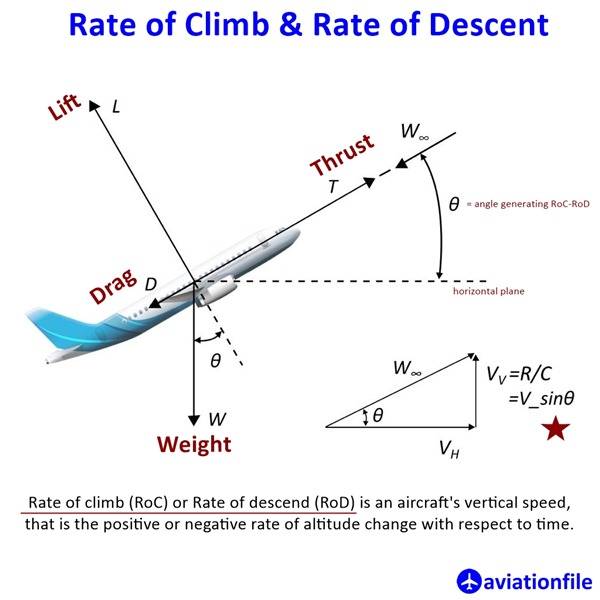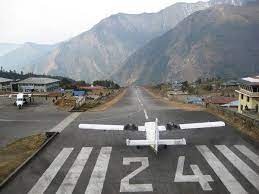High and Mighty: How Airport Altitude Affects Your Flight
Imagine a plane struggling to lift off, like a runner with weights strapped to their ankles. That’s what happens at high-altitude airports. The thinner air, less dense than at sea level, messes with an aircraft’s superpowers. How Airport Altitude Affects Your Flight?
Lift, you say? Less of it. Thin air means fewer molecules for the wings to grab onto, making it harder to generate lift. Think of it like scooping soup with a slotted spoon – less air, less lift.
Takeoff? Longer. That precious lift? Yeah, it’s weaker now. So, planes at high-altitude airports need more runway to get airborne, like a superhero needing a longer runway to leap tall buildings.
Climb? Slower. Once aloft, things don’t get much easier. The thinner air also saps engine power, making the climb a sluggish affair. Think of a car with a weak engine trying to climb a steep hill.

Landing? Tricky. Remember that reduced lift? It plays a nasty role here too. Planes need more speed to maintain lift during landing, making touchdown a delicate dance. Think of a tightrope walker with a wobbly balance beam.
Weight? Not so much. High-altitude airports often have weight restrictions. The weaker performance means less cargo or passengers can be safely carried. Think of a weightlifter choosing lighter weights for a high-altitude competition.

let’s buckle up and visit some of the world’s highest-altitude airports, where thin air reigns supreme:
- El Alto International Airport, Bolivia: This gateway to La Paz, Bolivia, sits at a staggering 13,325 feet, making it the highest commercial airport on the planet. Imagine landing here after a long flight – your ears might pop like champagne corks!
- Daocheng Yading Airport, China: This scenic gem in Sichuan province perches at a breathtaking 14,472 feet, surrounded by snow-capped peaks and ancient Tibetan villages. Flying here is like entering a mystical Shangri-La, but prepare for some serious runway length.
- Telluride Regional Airport, Colorado: This tiny airport near a ski resort in the Rocky Mountains boasts an elevation of 9,078 feet. Planes here take off like gazelles leaping over hurdles, and the views are pure Rocky Mountain magic.
- Tenzing-Hillary Airport, Nepal: Nestled in the shadow of Mount Everest, this airport in Lukla is a true test for pilots. At 9,334 feet, it’s surrounded by treacherous mountains and requires nerves of steel for both takeoff and landing.
- Bamda Airport, China: This remote outpost in Tibet, perched at a dizzying 14,219 feet, holds the title of the world’s highest non-military airport. Only specially trained pilots can tackle its challenges, and the views are truly out of this world.
These are just a few of the many high-altitude airports that dot our planet, each with its own unique challenges and rewards. So next time you’re planning a trip to a mountain paradise, remember: your flight might be an adventure in itself!
References:
El Alto International Airport, Bolivia:
- Wikipedia: https://en.wikipedia.org/wiki/El_Alto_International_Airport
- Official Website: https://www.sabsa.aero/aeropuerto-el-alto/
Daocheng Yading Airport, China:
- Wikipedia: https://en.wikipedia.org/wiki/Daocheng_Yading_Airport
- TripAdvisor: https://www.trip.com/review/yading-airport-22663509-163372921
Telluride Regional Airport, Colorado:
- Wikipedia: https://en.wikipedia.org/wiki/Telluride_Regional_Airport
- Official Website: https://tellurideairport.com/
Tenzing-Hillary Airport, Nepal:
- Wikipedia: https://en.wikipedia.org/wiki/Tenzing-Hillary_Airport
- Travel + Leisure: https://simpleflying.com/lukla-most-dangerous-airport/
Bamda Airport, China:
- Wikipedia: https://en.wikipedia.org/wiki/Changdu_Bangda_Airport
- South China Morning Post: https://www.nytimes.com/2017/09/13/magazine/what-the-worlds-emptiest-international-airport-says-about-chinas-influence.html
Additional Resources:
- List of highest airports: https://en.wikipedia.org/wiki/List_of_highest_airports
- How altitude affects aircraft performance: https://www.faasafety.gov/files/events/WP/WP09/2023/WP09123760/FAA-P-8740-02-DensityAltitude.pdf


